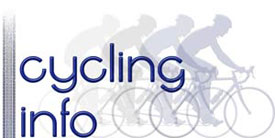When you have been training very hard, it can seem counter intuitive to hold back and train less. But, scientific and empirical evidence suggests the correct tapering is the most effective way to get the best performance on the day. I believe Chris Boardman made effective use of this tapering principle, at a time when it was less valued than it is now.
Victoria Pendleton talked about the tapering British athletes use [link]. 6 days before the race it involves taking 2 days of complete rest, followed by 2 days of training then a final 2 days of virtual rest. In the last training sessions, the duration of the training is gradually reduced, although the intensity is maintained. Victoria says that this taper is worth alot:
“If I have two days’ rest, I can go half a second faster than I was in training. And half a second on the track is massive.”
It is argued that Olympic trials often disrupt an athlete’s preparation. if you have to peak for the trials 2 months before the Games, it becomes more difficult to peak a second time, 2 months later. If an athlete doesn’t have to worry about Olympic trials then can train throughout the season, peaking just once.
My Tapering
My Peak for the season will be the last weekend in October for the National Hill climb championship. It makes it a long season. By the end of October, a tapering period feels like common sense as the dark winter nights and season long fatigue, encourage an instinctive taper anyway.
A tapering period can begin 2-4 weeks before the final race. Usually, an athlete will be training with tired legs; the training volumes never allow muscles to fully recover. An effective taper means that the muscles will be fully rested on the day of the event. This gives them a freshness lacking at other times of the year.


Leave a Reply